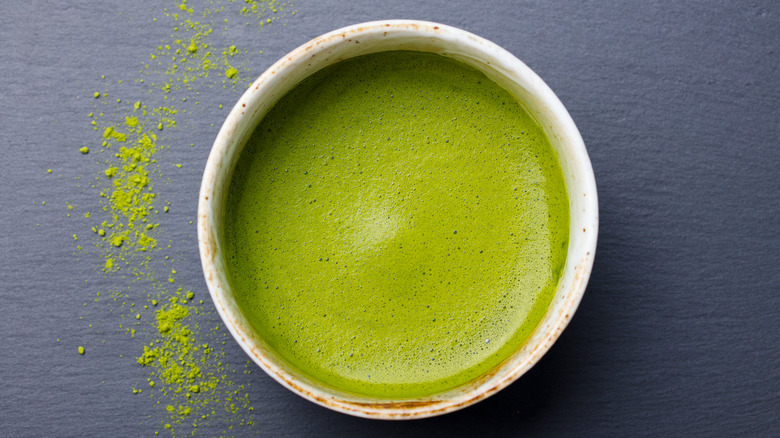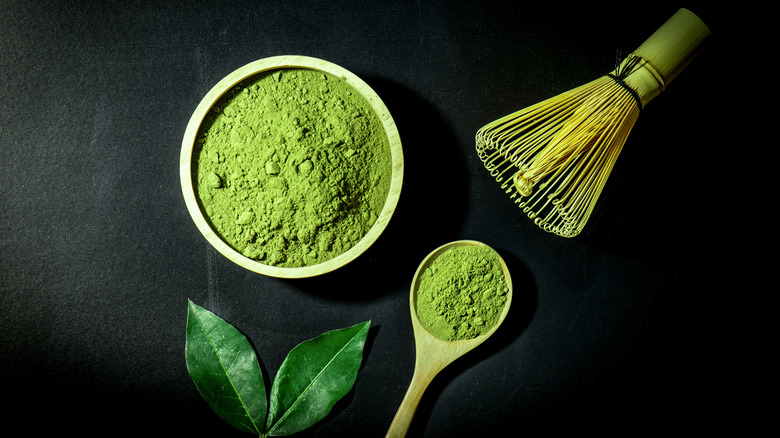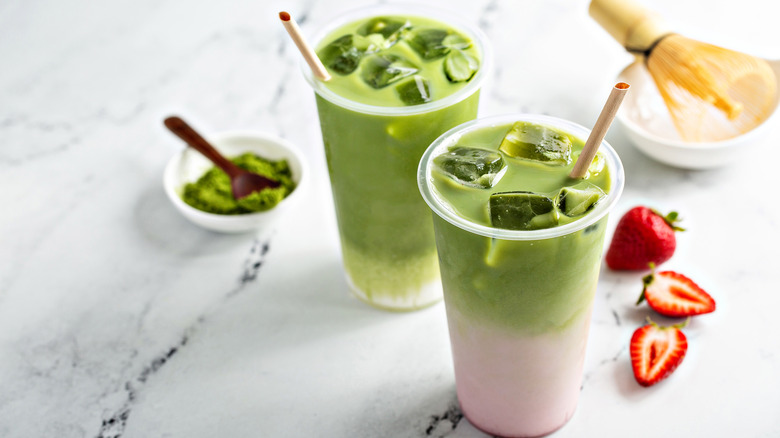Ceremonial Grade Matcha Vs. Culinary Grade Matcha: What's The Difference?
As one of the few drinks that allow you to consume the entire tea leaf, the powdered form of green tea, known as matcha, is packed with 10 times as many antioxidants as regular green tea (via Healthline). The unique shading process used while growing matcha gives the plant its deep shade of green and a boost of L-theanine, which gives it its umami flavor and calming buzz. It's no wonder the drink caught on in the West; however, its consumption has changed drastically from its Japanese roots. What Art of Tea says was once served during ancient tea ceremonies in Japan, can now be ordered in the Starbucks drive-thru on your way to work.
The same can be said for matcha powders, which are commonly sold and divided into two categories: ceremonial and culinary grades. However, these don't exist in Japan, where Naoki Matcha says the quality of matcha is measured based on the individual characteristics from blend to blend. While they may be convenient, the truth is that the two terms are entirely unregulated. Instead of considering culinary grade as the low-quality blend and ceremonial as the high-quality, each should be seen as designed for different uses. Then, by understanding their fundamental differences, you'll be able to get the most out of your matcha.
Differences in texture and taste
Generally, matcha powders that are labeled as ceremonial-grade will have a very fine texture, bright green color, and a subtle sweet taste. Naoki Matcha explains that this is because ceremonial powders are usually made from the first harvest tea leaves, which have the highest level of chlorophyll and L-theanine — the compound that is responsible for sweetening matcha and making it taste less bitter, according to Matcha. Along with their bright color and sweet taste, the high levels of chlorophyll and L-theanine in ceremonial matcha make it more potent.
Culinary-grade matcha powders tend to be made from the leaves of later tea harvests. Because of this, Naoki Matcha says that the color may range from a bright, deep shade of green to a swampy, brown shade of green. This also means they could taste more bitter depending on how late the leaves were harvested. While they tend to come at a friendlier price, they do not contain as much chlorophyll or L-theanine (via Kenko Matcha), but that doesn't mean they're useless. Jade Leaf Matcha says these blends contain more antioxidants and have their own unique uses.
When to use ceremonial vs. culinary-grade matcha
While they may not hit the mark on flavor or color on their own, culinary matcha powders have their own unique advantages. Due to their more potent flavor, Naoki Matcha actually doesn't recommend using them in tea. Instead, these blends are best used when mixed into recipes with other ingredients: whether you're making muffins or a matcha cocktail. Not only will the other ingredients work to balance its flavor, but because of culinary matcha's friendlier price point (via Afternoon Tea Reads), it's more sensible to use in larger batches — so there's no need to splurge on the ceremonial stuff when cooking or baking. This also means both types could work in your morning latte, depending on your taste preference.
As the name suggests, ceremonial-grade matcha powders are the blends that are used in traditional tea ceremonies. Naoki Matcha says that thanks to their sweeter flavor profile, these blends are intended to be whisked with water, using a bamboo whisk, then can be drunk plain. And most brands make more affordable ceremonial blends for lattes because the fats and sugars from the milk help to balance the flavor. This means you can save money and still enjoy the nice calming buzz that the L-theanine in ceremonial matcha provides.


